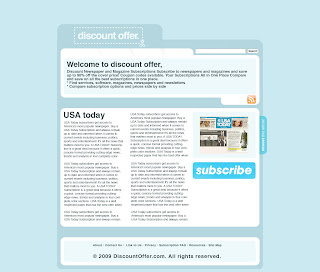
Monday, 14 September 2009
I was looking for a decent piece of type production software online when I stumbled onto this. If you're going to give advise on type creation, don't use Comic Sans...
Saturday, 12 September 2009
Wednesday, 9 September 2009
Since the last time I shared a pearl of Graphic Design wisdom on here, I've been working on a website with my friend and business cohort, Afro. Basically, we're selling sets of pre-made graphics that other websites can use to remind visitors to 'tweet' about their content. I think that's probably a pretty bad explanation, but see for yourself. http://www.retweetgraphics.com
Wednesday, 2 September 2009
'Opportunities' by the Pet Shop Boys is the number one song in my itunes list of 25 most played tracks. On that note, I looked up the designer behind the packaging for 'Pop Art', and found out it's this guy. Even if you don't dig flamboyant 80s synth pop, it's worth a peruse.
Tuesday, 11 August 2009
Wednesday, 29 July 2009
Monday, 27 July 2009
Connery's Ark
Aside the summer brief, my time has been taken up with;
- Court Proceedings
- Drink... etc.
- Watford's Social Complexities
- Eddie Izzard
I knew I'd become lost without a full, heavy, get-stuck-in brief with a deadline that makes building the 2012 stadium seem easy. [Do not complain about my referring to the current briefs as not 'get-stuck-in'. Complain that I'm not going on about it.] So, whilst still in Leeds, at about 5am, I decided I wanted to trace something in Illustrator. So here it is. Visual Language: Smoking Kills.

As well as this, I've done a bit of the ol' freelance. I ended up doing a logo for a hypnosis website. Odd is an understatement, but still, I've gotta work hard for the monies, as papa needs a new sla- nah. I won't say it.
- Court Proceedings
- Drink... etc.
- Watford's Social Complexities
- Eddie Izzard
I knew I'd become lost without a full, heavy, get-stuck-in brief with a deadline that makes building the 2012 stadium seem easy. [Do not complain about my referring to the current briefs as not 'get-stuck-in'. Complain that I'm not going on about it.] So, whilst still in Leeds, at about 5am, I decided I wanted to trace something in Illustrator. So here it is. Visual Language: Smoking Kills.

As well as this, I've done a bit of the ol' freelance. I ended up doing a logo for a hypnosis website. Odd is an understatement, but still, I've gotta work hard for the monies, as papa needs a new sla- nah. I won't say it.
Sunday, 17 May 2009
I Shot A Man In Reno
Friday, 8 May 2009
Orchestral Maneuvers In The Park
CRAIG ALEXANDER LAING MANIFESTO 2009
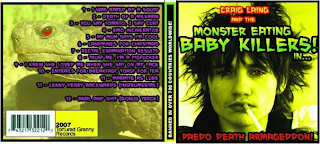
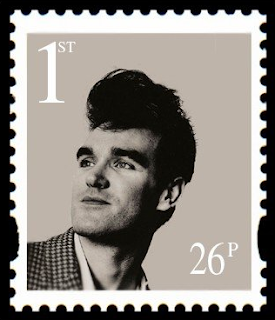
I feel I have evolved as a designer a lot since September, it would seem as the country's financial state gets worse, I get better. When I started this course, I was a lot of things. Arrogant, confident, very fixed in the way I work, not particularly reliable and also very limited, skill wise. At least in comparison to the designer I am now.

See? I was great.
I had very little knowledge of Illustrator, thought that doing 'hand made' graphic design was
reason enough for a lobotomy, and generally stuck to one way of working. I liked the design I was producing, and didn't really see a need for change. When Fred said at the start of the year that if we thought we had a 'style' we should forget it, that resonates with me now because I am actively trying to approach briefs with a versatile attitude.

Royal Mail weren't too interested
in my proposal.
I am happy with where I am now as a designer, I know there is an infinite amount of things I can improve about my work and thinking, but as is I am satisfied that I've come a long way, baby. Where I'd like to improve, work-wise, is my flexibility, I want to be able to look at a brief and find a solution that is right for the problem, rather than a solution that is right for me.
I also want to improve my skills with things like print/book binding, photography, video (and video editing) as well as software. That said, software wise I want to become more proficient with Illustrator, Dreamweaver and Flash. I have a decent enough knowledge of those programs to get by with, but I want to become professional.
As usual, timekeeping is an issue with me, and I want to eradicate it like Stalin did with his high-ranking officers. I wish I had his conviction. I do believe that I have made steady progress on this course, and that my understanding of Graphic Design, both in ways of thinking and also industry, has grown since coming here.
Wednesday, 29 April 2009
Death's Payroll
It's part of being a Graphic Designer to keep up to date with current affairs, but even if you are reluctant to read the news it is hard to avoid the current furor over 'Swine Flu'. The government are set to be sending out an information pack to every UK household within three days, and when I heard this it got me thinking - wouldn't that be a great brief? Working on something like that would be a great platform for any agency to become recognised, and it's also a great opportunity to delve into some information graphics. Bit of the ol' iconography and whatnot.
 It reminds me of the 'Protect & Survive' leaflet, which is an infamous piece of graphic design. I've absolutely no idea who created it (So maybe my previous point about it being good for recognition is invalid...) but doesn't designing something like this seem appealing? Not for the morbid side to it, but because of the knowledge that people will be turning to your design in their 'hour of need'? Look at the protect and survive leaflet - moments before you become a stain on a radioactive wasteland, the last thing you see is Helvetica. Typical.
It reminds me of the 'Protect & Survive' leaflet, which is an infamous piece of graphic design. I've absolutely no idea who created it (So maybe my previous point about it being good for recognition is invalid...) but doesn't designing something like this seem appealing? Not for the morbid side to it, but because of the knowledge that people will be turning to your design in their 'hour of need'? Look at the protect and survive leaflet - moments before you become a stain on a radioactive wasteland, the last thing you see is Helvetica. Typical.

The AIDS awareness print/TV campaign from the 80s had more of a threatening tone to it than the leaflet advising on precautions to take on nuclear war. Why is that? I'm going off on one a bit here, but the news that Labour are sending out a print campaign to advise on Swine Flu just got me thinking. It also made me think back to Monday when Fred asked who would work for Mc.Donalds.
I would. Definitely. In a heartbeat. It's unethical? I don't care. I'm not getting into graphic design to make the world a better place, I'm not intending to use Photoshop to earn a nobel peace prize. If you were to turn down a job like that, it wouldn't exactly cripple them would it? They'd just hire someone else. And if the price tag attached to work for Mc.Donalds is somewhere in the region of £5,000,000 - then surely it'd be a good idea to work for Mc.Donalds on a graphic design level, then use the massive profits to champion ethical causes, or donate it to an anti-child labour charity?
Bill Hicks hated ad men for a reason, and that reason was this: We are meant to sell our souls to the highest bidder. That is a fundamental nature of our industry, and I'm quite happy with it. I'd work on a print campaign for a political party I disagree with for the right amount. If you are going to be picky about who you work for, then good luck.
Oh, and on a side note, regular, everyday run-of-the-mill Flu kills between 250,000-500,000 people annually. Swine Flu - Don't Die of Paranoia.
The AIDS awareness print/TV campaign from the 80s had more of a threatening tone to it than the leaflet advising on precautions to take on nuclear war. Why is that? I'm going off on one a bit here, but the news that Labour are sending out a print campaign to advise on Swine Flu just got me thinking. It also made me think back to Monday when Fred asked who would work for Mc.Donalds.
I would. Definitely. In a heartbeat. It's unethical? I don't care. I'm not getting into graphic design to make the world a better place, I'm not intending to use Photoshop to earn a nobel peace prize. If you were to turn down a job like that, it wouldn't exactly cripple them would it? They'd just hire someone else. And if the price tag attached to work for Mc.Donalds is somewhere in the region of £5,000,000 - then surely it'd be a good idea to work for Mc.Donalds on a graphic design level, then use the massive profits to champion ethical causes, or donate it to an anti-child labour charity?
Bill Hicks hated ad men for a reason, and that reason was this: We are meant to sell our souls to the highest bidder. That is a fundamental nature of our industry, and I'm quite happy with it. I'd work on a print campaign for a political party I disagree with for the right amount. If you are going to be picky about who you work for, then good luck.
Oh, and on a side note, regular, everyday run-of-the-mill Flu kills between 250,000-500,000 people annually. Swine Flu - Don't Die of Paranoia.
Tuesday, 31 March 2009
Bono Vox [End of module self evaluation]
1. What skills have you developed through this module and how effectively do you think you have applied them?
Well, in this module, I've developed several practical skills which I have transferred to other projects, but I think the way of thinking taught in the module will probably be the most valuable skill I have acquired in the end. The very idea of 'Visual Language' and how shapes make up images, the 'vocabulary' of pictures we use and whatnot. I use a lot of vector-based artwork in my designs, and learning to use simple shapes to explain, in comparison, complex type, proved useful.
I think, to a degree, everyone (well... most people.) in our class will have had some grasp of visual language before they started the module, and what I believe has happened for me is that it has highlighted the 'complex simplicity' of images, forcing me to analyse an image to grasp the background message makes it easier to understand how your audience might find your work confusing or overly elaborate.
That said, on the practical side I found the photography lessons quite beneficial, in that I have used some of the techniques we were shown for a long time, but getting to know how to use them professionally, and knowing the terms used to describe them, i feel, has given my work in that field more of a professional edge, and less of a 'I did it by accident, but it looks good.' vibe.
I think my attitude towards what I was getting out of the lessons has changed since the start, it's easy to look upon this module at face value, and if you stick to that attitude then you're not going to come away from it with much.
An example of where I've applied the knowledge I've gained from this module would be the 'hymen' poster I created for the don't panic brief [at http://0ugd103.blogspot.com], I managed to use near-enough iconography to get my point across and even though it was a two colour image with a simple dotted line, a single header and a scissor icon, it still managed to offend people and those I showed it to knew exactly what I was getting at immediately.
2. What approaches to / methods of research have you developed and how have they informed your design development process?
Research has always been the bane of my graphic design work, I freely admit that I am not nearly as good as I should be due to this, it's not that I resent carrying out research, I am just terrible at going about it. So, with this module, I'd say perhaps one of the things I've learned to do is use a camera as a source of primary research. I've been using it more to document my work, and, for example with the book brief, I would take photos with a point-and-click of what I intended to create before taking the final shot with an SLR, just to make sure it would come out as it looked in my head.
One thing I have developed, which, although may not strictly be research as such, is at least related in terms of my design process, is the idea of quickly sketching out ideas on worksheets, all too often I find myself drawn into creating small, tight drawings at the development stage when it is unnecessary, and since starting this brief I have tried to take more of a loose attitude to my initial ideas, I think this is apparent with the last few briefs we've been set.
3. What strengths can you identify in your work and how have/will you capitalise on these?
This time round, I think the strengths which have become apparent for me are things like my ability to take one visual and try and expand on it as much as possible (For me, anyway...). With the sound waves/bars I've been looking at, it was frustrating working with something which I felt was so fixed and static, but I kept pushing at it because I didn't want to have a load of scattered ideas by the end of the module and no real focus. This turned out to be the right way of going about it for me, as the visuals I have ended up with look quite different to those I started with.
On that note, I believe my 'finished' visuals are of a high quality, the work I produce I am proud of, particularly any final resolutions. Given the creative freedom we have within the class (In comparison to the 'real world') I wouldn't feel valuable as a designer if I didn't personally like every final solution I came up with, and I have a tendency to really take time and perfect my finals. I also feel that recently, I've changed my work ethic with regards to the course, and this has improved my output, not just in quantity but quality as well. For example, instead of going upstairs and getting an A3 inkjet printout, I'll go downstairs and spend a bit of money getting a nice, suitable print for the work, work which I will have spent twice as much time on as before.
Mixed media is something I've also dabbled in this time, I've used paints and inks for, I think, the first time on this course. Not a whole lot, but it is for me, and it's hard to peel yourself away from a mac.
4. What weaknesses can you identify in your work and how will you address these more fully?
Although I've been using my blogs a lot more lately, I feel I've let it slip a bit in terms of visual language, I set up a second blog specifically for the third module and most of my activity has been on that, so I think my research has suffered as a result. During crits, I'd look at other people's blogs and see that they'd padded them out with online research, so I'd go away from it and upload a post, but then soon forget about it after getting a new brief. Generally on the course, though it's unintentional, visual language seems to take a back seat when we've got other briefs on the go, especially as the deadline seemed so far off. I think to address this I need to maybe select a couple of days a week where my time spent at home is focused on visual language (or, whatever's next for that matter...) so that it's never too far from my mind. If I can keep up to date with my new blog, there's no reason I can't with updates for visual language.
Another thing I feel I've let myself down on with this module is my punctuation and general attendance, at this stage of the module I'm having to scour my draw and my flat for work I've done, but can't be sure I was there at the right time or at all. I tend to stay late at college, but it doesn't really compensate if I'm missing taught sessions.
5. Identify five things you will do differently next time and what you expect to gain from doing these
- Experiment more. Next time round, I think it'd be beneficial for me to explore new media and ways of creating images. Even if it starts out on paper and ends up being scanned in, I think the tools available on a mac are seeming more pre-determined to me now than ever, and thus, showing their limitations.
- Buy paper stock. So far this year a lot of my work has ended up coming out on 90gsm bleached white paper, which while functional, isn't very interesting. I've tried to include a bit more variety with my choice of paper lately but I'm aware that I can do more.
- Set up a blog for every module. I found setting up a blog for the third module made the whole idea of blogging seem fresh, so i was more inclined to update it. I think this is good practice anyway as it makes navigation easier and also allows for more creativity when it comes to layout and whatnot. Plus, I'm aware that we'll be learning Dreamweaver next year so maybe I should get used to tweaking around with HTML again...
- Set personal deadlines. I'm getting sick of it coming to the last week and having to rush around to make sure I've got everything done. I think I'd work more efficiently if I had deadlines that were closer together as I worked through the module, because I seem to snap into action when a deadline rolls around so my logic is if they happen more frequently I'll keep on top of things easier.
- Back up EVERYTHING. With this module, I've had severe technological issues with my PC at home (I shall be buying a mac next month...), the saturday before module hand in, my PC crashed, and would only start in safe mode. Then it wouldn't recognise my USB key or hard drive, so I had to spend hours and hours over the weekend trying different things until I got it running again. And for someone who relies so much on their digital work, it could've been a catastrophe which would've been quite hard to explain without dragging it into college to prove it was broken.
6. How would you grade yourself on the following areas:
Attendance: 2
Punctuality: 2
Motivation: 3
Commitment: 5
Quantity of work produced: 3
Quality of work produced: 4
Contribution to the group: 5
Well, in this module, I've developed several practical skills which I have transferred to other projects, but I think the way of thinking taught in the module will probably be the most valuable skill I have acquired in the end. The very idea of 'Visual Language' and how shapes make up images, the 'vocabulary' of pictures we use and whatnot. I use a lot of vector-based artwork in my designs, and learning to use simple shapes to explain, in comparison, complex type, proved useful.
I think, to a degree, everyone (well... most people.) in our class will have had some grasp of visual language before they started the module, and what I believe has happened for me is that it has highlighted the 'complex simplicity' of images, forcing me to analyse an image to grasp the background message makes it easier to understand how your audience might find your work confusing or overly elaborate.
That said, on the practical side I found the photography lessons quite beneficial, in that I have used some of the techniques we were shown for a long time, but getting to know how to use them professionally, and knowing the terms used to describe them, i feel, has given my work in that field more of a professional edge, and less of a 'I did it by accident, but it looks good.' vibe.
I think my attitude towards what I was getting out of the lessons has changed since the start, it's easy to look upon this module at face value, and if you stick to that attitude then you're not going to come away from it with much.
An example of where I've applied the knowledge I've gained from this module would be the 'hymen' poster I created for the don't panic brief [at http://0ugd103.blogspot.com], I managed to use near-enough iconography to get my point across and even though it was a two colour image with a simple dotted line, a single header and a scissor icon, it still managed to offend people and those I showed it to knew exactly what I was getting at immediately.
2. What approaches to / methods of research have you developed and how have they informed your design development process?
Research has always been the bane of my graphic design work, I freely admit that I am not nearly as good as I should be due to this, it's not that I resent carrying out research, I am just terrible at going about it. So, with this module, I'd say perhaps one of the things I've learned to do is use a camera as a source of primary research. I've been using it more to document my work, and, for example with the book brief, I would take photos with a point-and-click of what I intended to create before taking the final shot with an SLR, just to make sure it would come out as it looked in my head.
One thing I have developed, which, although may not strictly be research as such, is at least related in terms of my design process, is the idea of quickly sketching out ideas on worksheets, all too often I find myself drawn into creating small, tight drawings at the development stage when it is unnecessary, and since starting this brief I have tried to take more of a loose attitude to my initial ideas, I think this is apparent with the last few briefs we've been set.
3. What strengths can you identify in your work and how have/will you capitalise on these?
This time round, I think the strengths which have become apparent for me are things like my ability to take one visual and try and expand on it as much as possible (For me, anyway...). With the sound waves/bars I've been looking at, it was frustrating working with something which I felt was so fixed and static, but I kept pushing at it because I didn't want to have a load of scattered ideas by the end of the module and no real focus. This turned out to be the right way of going about it for me, as the visuals I have ended up with look quite different to those I started with.
On that note, I believe my 'finished' visuals are of a high quality, the work I produce I am proud of, particularly any final resolutions. Given the creative freedom we have within the class (In comparison to the 'real world') I wouldn't feel valuable as a designer if I didn't personally like every final solution I came up with, and I have a tendency to really take time and perfect my finals. I also feel that recently, I've changed my work ethic with regards to the course, and this has improved my output, not just in quantity but quality as well. For example, instead of going upstairs and getting an A3 inkjet printout, I'll go downstairs and spend a bit of money getting a nice, suitable print for the work, work which I will have spent twice as much time on as before.
Mixed media is something I've also dabbled in this time, I've used paints and inks for, I think, the first time on this course. Not a whole lot, but it is for me, and it's hard to peel yourself away from a mac.
4. What weaknesses can you identify in your work and how will you address these more fully?
Although I've been using my blogs a lot more lately, I feel I've let it slip a bit in terms of visual language, I set up a second blog specifically for the third module and most of my activity has been on that, so I think my research has suffered as a result. During crits, I'd look at other people's blogs and see that they'd padded them out with online research, so I'd go away from it and upload a post, but then soon forget about it after getting a new brief. Generally on the course, though it's unintentional, visual language seems to take a back seat when we've got other briefs on the go, especially as the deadline seemed so far off. I think to address this I need to maybe select a couple of days a week where my time spent at home is focused on visual language (or, whatever's next for that matter...) so that it's never too far from my mind. If I can keep up to date with my new blog, there's no reason I can't with updates for visual language.
Another thing I feel I've let myself down on with this module is my punctuation and general attendance, at this stage of the module I'm having to scour my draw and my flat for work I've done, but can't be sure I was there at the right time or at all. I tend to stay late at college, but it doesn't really compensate if I'm missing taught sessions.
5. Identify five things you will do differently next time and what you expect to gain from doing these
- Experiment more. Next time round, I think it'd be beneficial for me to explore new media and ways of creating images. Even if it starts out on paper and ends up being scanned in, I think the tools available on a mac are seeming more pre-determined to me now than ever, and thus, showing their limitations.
- Buy paper stock. So far this year a lot of my work has ended up coming out on 90gsm bleached white paper, which while functional, isn't very interesting. I've tried to include a bit more variety with my choice of paper lately but I'm aware that I can do more.
- Set up a blog for every module. I found setting up a blog for the third module made the whole idea of blogging seem fresh, so i was more inclined to update it. I think this is good practice anyway as it makes navigation easier and also allows for more creativity when it comes to layout and whatnot. Plus, I'm aware that we'll be learning Dreamweaver next year so maybe I should get used to tweaking around with HTML again...
- Set personal deadlines. I'm getting sick of it coming to the last week and having to rush around to make sure I've got everything done. I think I'd work more efficiently if I had deadlines that were closer together as I worked through the module, because I seem to snap into action when a deadline rolls around so my logic is if they happen more frequently I'll keep on top of things easier.
- Back up EVERYTHING. With this module, I've had severe technological issues with my PC at home (I shall be buying a mac next month...), the saturday before module hand in, my PC crashed, and would only start in safe mode. Then it wouldn't recognise my USB key or hard drive, so I had to spend hours and hours over the weekend trying different things until I got it running again. And for someone who relies so much on their digital work, it could've been a catastrophe which would've been quite hard to explain without dragging it into college to prove it was broken.
6. How would you grade yourself on the following areas:
Attendance: 2
Punctuality: 2
Motivation: 3
Commitment: 5
Quantity of work produced: 3
Quality of work produced: 4
Contribution to the group: 5
Saturday, 21 March 2009
Hoover Bags: Only A Pound At The Plaza
You may have [but probably haven't] noticed that there's been a drought in the way of updates here lately, well, that's because I've set up a brand-spanking-new blog dedicated to the third module! Try and quell your excitement, then visit this link right here to check it out. It's totally tasteful.
While I'm here, thought I'd post the work I've been doing for my mate Afro's website. He's one of them marketing types, but do not judge him.
Here's one of the logos I've come up with for his website:
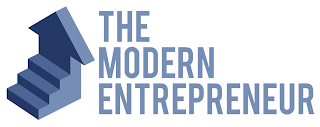
While I'm here, thought I'd post the work I've been doing for my mate Afro's website. He's one of them marketing types, but do not judge him.
Here's one of the logos I've come up with for his website:

Wednesday, 11 March 2009
Nothing In Moderation
Prepare your eyes, for I am about to unleash an incendiary payload of 'What Is A Line' work upon your heads. I've been trying to work out the best way to visualise sound with line, I've been using music software (Reason, Ableton) to create music visualisations, and to be honest, it's quite restrictive as to what you can do, there are only so many 'wave' and 'bar' visualisations out there. One way to get around this is to layer them on top of each other, this creates more interesting visuals, and some of them end up looking like landscapes - a lot like the 'Unknown Pleasures' artwork I was first inspired by.
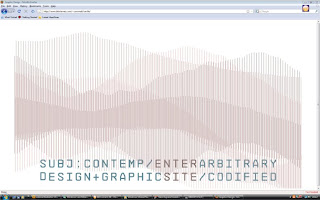
That's the splash page on his website, see the bars making up mountainous terrain? I saw that and though 'Wow, Peter Saville, what a guy.' And decided to play around with his idea a bit to see what I could make of it. God bless Illustrator:
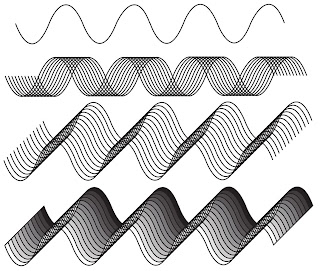
Copying that single wave and layering it has made it so much more interesting, all thanks to Saville. Staying up all night while my Leeds Met contemporaries slumber peacefully, all to meet deadlines, feels less like agony knowing that good ol' Saville will have done the same thing before I was even born.
In the image at the bottom, I've shaded it in Live Paint to give it more of a 3-D feel but, I'll avoid doing that with any final resolutions because it's escaping the entrapment of 'line' - and even if it isn't, I'll feel like I'm cheating.
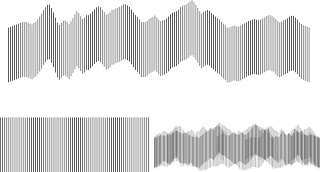
I've used Illustrator [Swiss Army Programme] to replicate the Saville website, I started off with a set of lines drawn out, selected them individually and moved them around to line up with the wave lines produced by 'Evil Has Never' by Union of Knives. I really love the visuals I'm getting from this, and I don't feel the need to over-complicate my work when it comes to the What Is A Line brief, embellishment is a prison in this case.
Anyway, I was looking into Peter Saville a bit more after that initial atomic flash of inspiration, I've read the Factory Records Graphic Album [Where I first got the idea from...] in full, and from that I've been on his personal website. Take an eyeful of this:

That's the splash page on his website, see the bars making up mountainous terrain? I saw that and though 'Wow, Peter Saville, what a guy.' And decided to play around with his idea a bit to see what I could make of it. God bless Illustrator:

Copying that single wave and layering it has made it so much more interesting, all thanks to Saville. Staying up all night while my Leeds Met contemporaries slumber peacefully, all to meet deadlines, feels less like agony knowing that good ol' Saville will have done the same thing before I was even born.
In the image at the bottom, I've shaded it in Live Paint to give it more of a 3-D feel but, I'll avoid doing that with any final resolutions because it's escaping the entrapment of 'line' - and even if it isn't, I'll feel like I'm cheating.

I've used Illustrator [Swiss Army Programme] to replicate the Saville website, I started off with a set of lines drawn out, selected them individually and moved them around to line up with the wave lines produced by 'Evil Has Never' by Union of Knives. I really love the visuals I'm getting from this, and I don't feel the need to over-complicate my work when it comes to the What Is A Line brief, embellishment is a prison in this case.
Subscribe to:
Comments (Atom)












